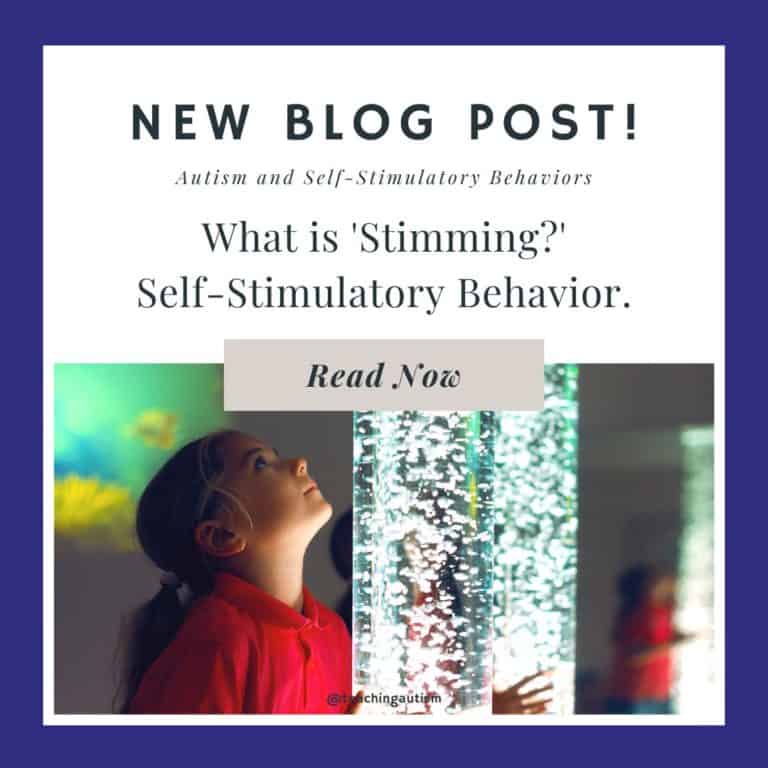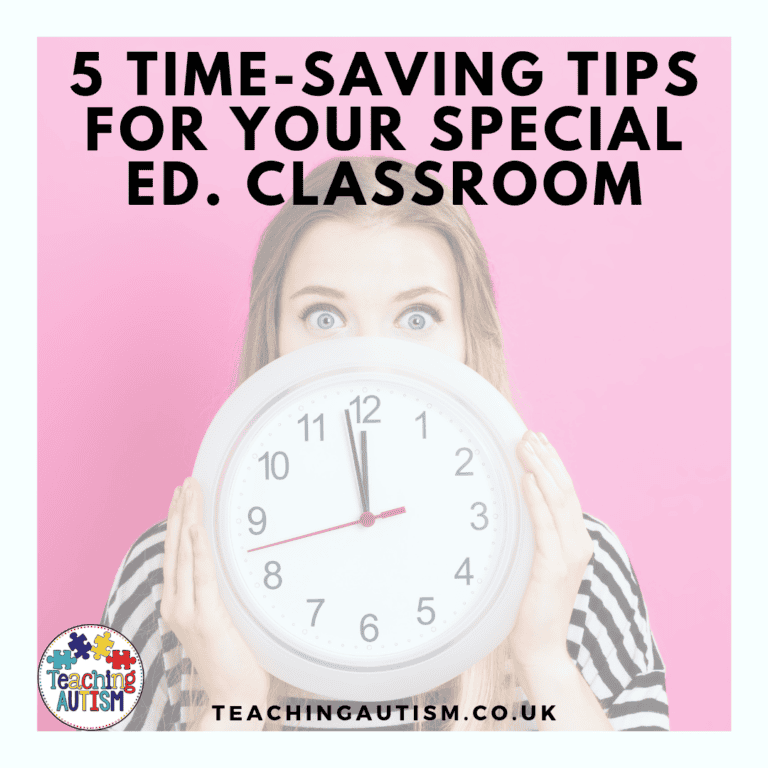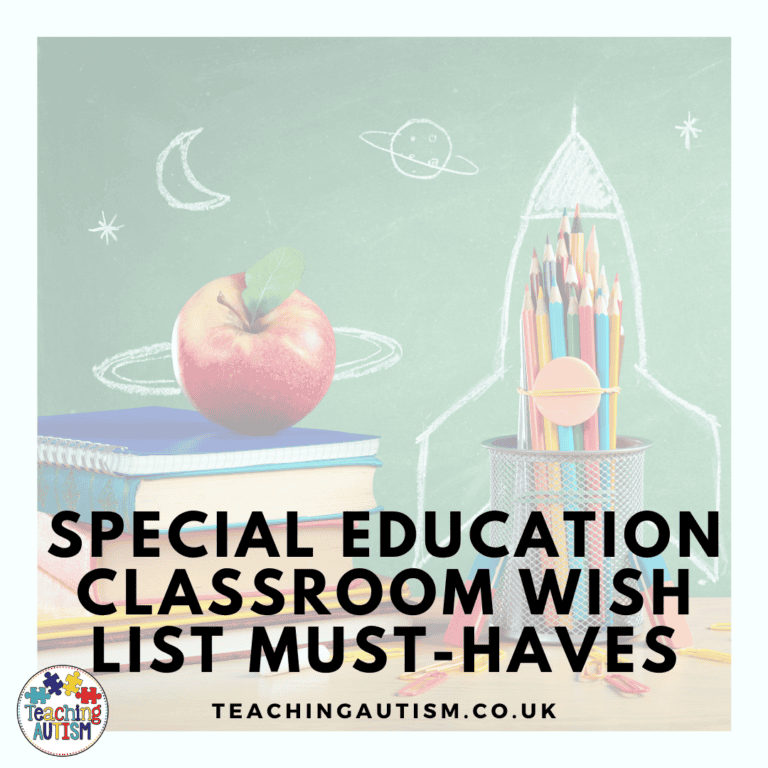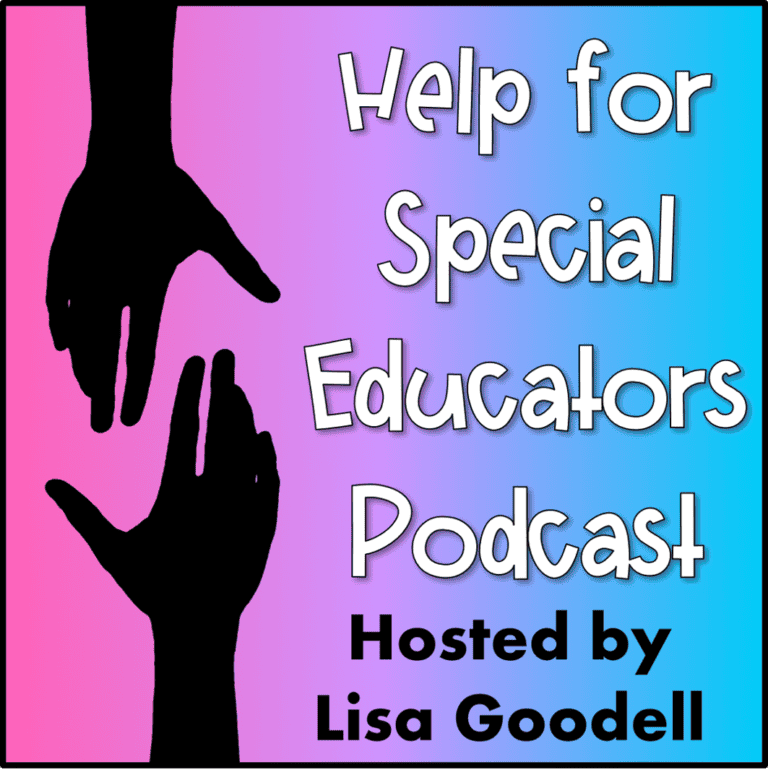What is Co-Regulation?
Today in this ‘What is co-regulation?’ blog post I’m going to be helping you to understand what co-regulation is and the benefits of this for our autistic students.
What is Co-Regulation?
Co-regulation is a concept that is quickly gaining popularity in our field right now. Put simply, it refers to the supportive process where caregivers or educators can help our children/students to manage their emotions and/or behaviors.
Our autistic students often face self-regulation challenges.. So co-regulation can be a really important tool to help support them.
Co-regulation involves an interaction that takes place between the student and a supportive adult. The adult is going to provide scaffolding to help the student regulate their emotional responses.
Some of these scaffolding strategies can be;
- Calming techniques.
- Offering reassurance.
- Provided guidance.
What is the Goal of Co-Regulation?
The goal of co-regulation is for us to create a safe and predictable environment where our students can learn ways to manage their own emotions and behaviors. For our autistic students this is especially beneficial because they will often struggle with communication and social interactions and have heightened sensory needs.
How to Implement Co-Regulation
If you want to implement co-regulation with your students, then you’re going to way to consider using some of the following strategies;
1. Establish a Safe Environment
First of all you are going to want to create a classroom environment that is structured and predictable. The best way to do this is to ensure that you have consistent routines and clear expectations.
2. Model Calm Behavior
Your students look to you and the adults around them for how they should behave. If you and the other adults around you model calm and composed behaviors.. Your students are likely to mimic this. Things like using a soothing tone of voice and being aware of gentle body language can help promote the feeling of calm.
3. Use Visuals
I am a huge advocate of using visuals. It’s not just our autistic students who benefit from visuals – everyone does! Visual supports in the classroom can include;
All of these visuals can help students to understand and anticipate what’s coming next. This helps to reduce uncertainty and stress for our students.
4. Offer Sensory Breaks
When you introduce and use sensory breaks in your classroom, your giving your students the chance to manage overstimulation. Sensory breaks can include;
- Movement breaks.
- Weighted blankets.
- Yoga.
- Fidget toys.
- Quiet corner time.
5. Positive Reinforcement
It’s really important to implement some positive reinforcement into your classroom. You’re going to do this by reinforcing positive behaviors that you see with praise and rewards. This helps to encourage the desired behaviours that you want to see.. But it also helps to build that important positive and trusting relationship with your students.
4 Benefits of Co-Regulation
For our autistic students, there are a huge range of benefits of using co-regulation. 4 of these include;
1. Reduces Anxiety and Stress
Co-regulation helps to reduce anxiety and stress in our students. This in turn helps to create a more conducive learning environment.
2. Increased Classroom Participation
When your students feel supported and understood, they are going to be more likely to engage and participate in your classroom activities.
3. Develops Self-Regulation Skills
By using co-regulation, you are going to help your students develop self-regulation skills. Your students are going to have the opportunity to recognize their own emotional states. This is going to help them to develop their own strategies for this.
4. Strengthens Student and Teacher Relationships
Using co-regulation is going to strengthen the relationship that you have with your students. It will help to build trust between your and your students and this is going to have a huge impact on your teaching.
If you found this blog post helpful please consider sharing it with your friends and colleagues on social media.
You May Also Like
If you liked this blog post, you may find the following links helpful;
- Sensory Sensitivities and Autism
- Behavior Management in the Classroom
- How to Use Sand Timers in the Classroom
- Movement Breaks

P.S. Have you signed up for a 3 day free trial of my VIP membership yet? If not, click here to do it now and go and get access to a huge range of resources, templates, crafts and more for free.
Nikki






